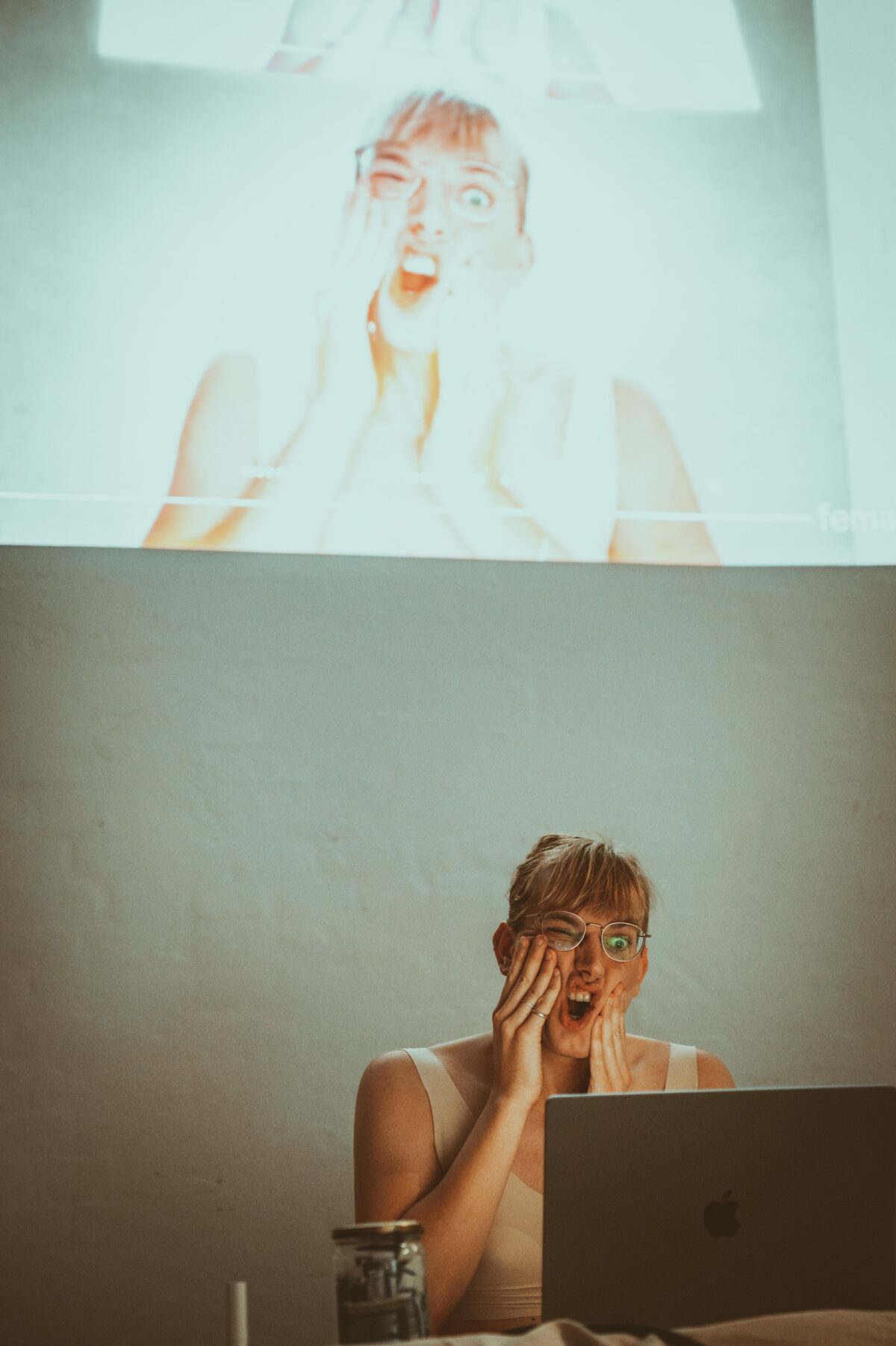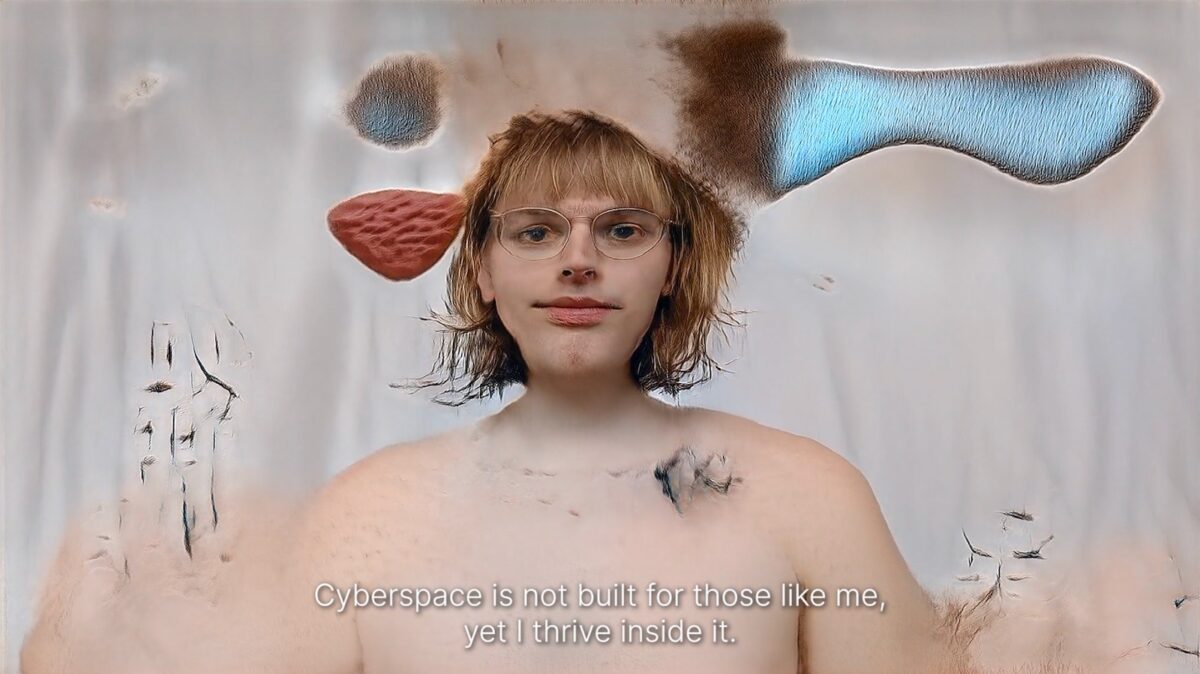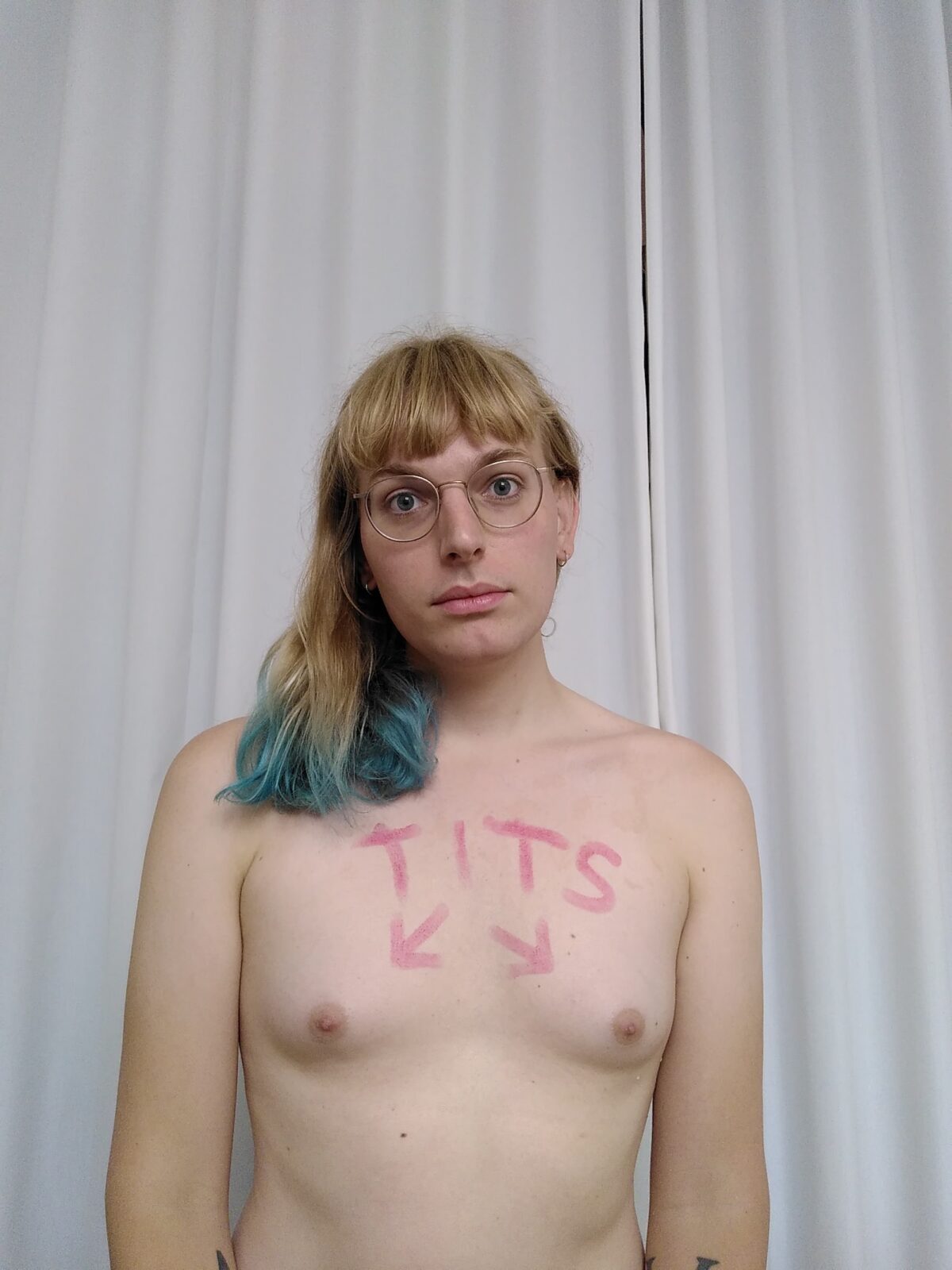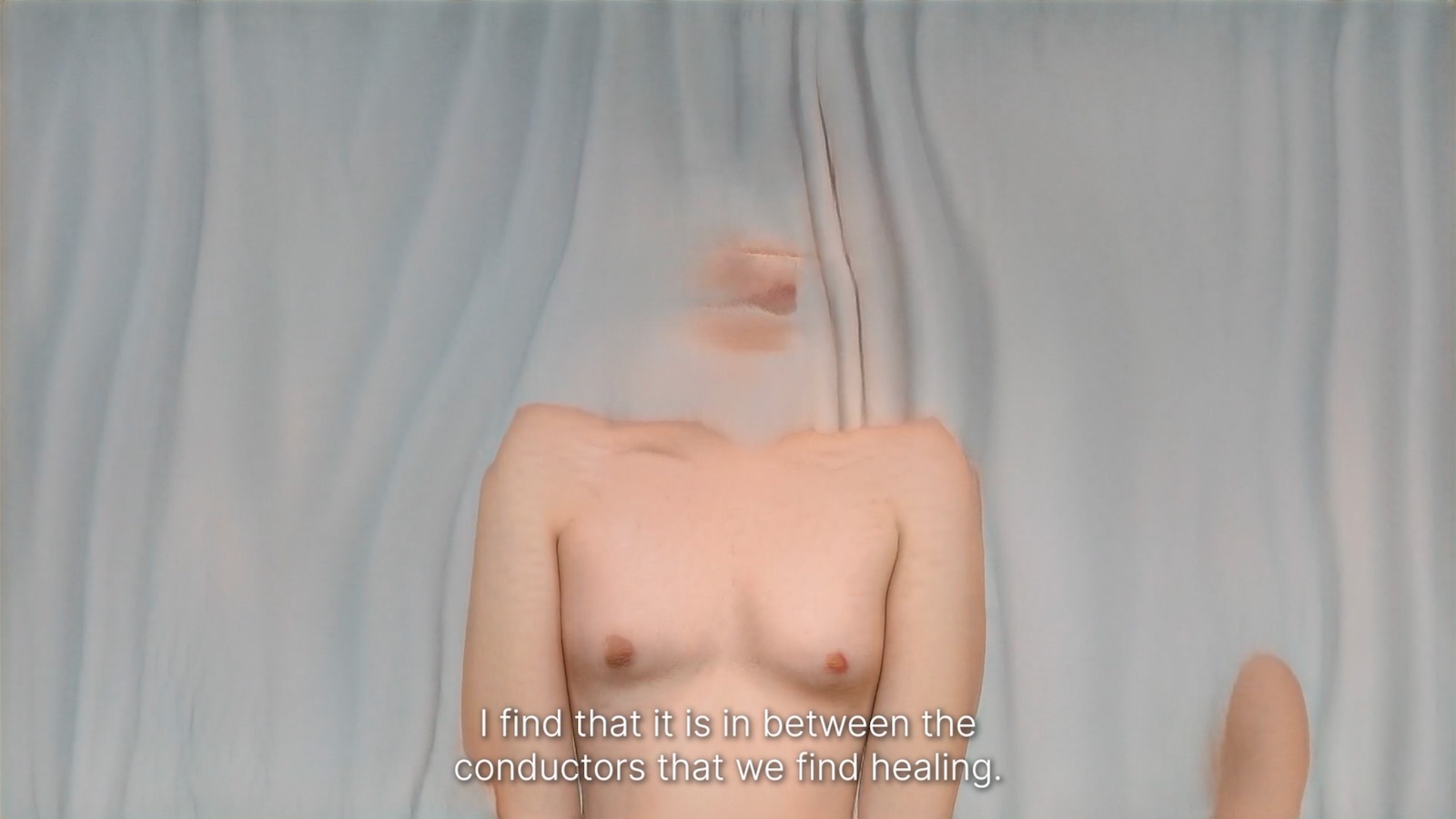How do you describe your own art practice?
I make algorithmic art, so in one way or another, algorithms are always present in my work. Sometimes I write my own algorithms, and sometimes I (mis)use those made by others. Sometimes I do both at the same time. I have a particular interest in how computational systems relate to gender and queerness, so in order to investigate this, I adapt the format of my works to the particular topic or technology that I am interested in. So far, my practice has included performative photography, AI video, computer-augmented performance, short stories, net art and more.

Which question or theme is central in your work?
At the heart of my practice lies the question: How can algorithms be used to understand and challenge experiences of gender, queerness and bodies in novel ways?
I investigate this from a simultaneously personal, aesthetic and political point of view, so my own experience living as a queer trans woman informs a lot of my work. My body is also often used as a tool in my pieces. It provides me with a common starting point in terms of maintaining a coherent aesthetic across various works, but it also acts as a reliable basis for my investigations into how computational systems react to queer gender expressions.

What was your first experience with art?
My first memory of feeling connected to an artwork was when I saw Auguste Cot’s Springtime in a museum in New York, when I was about 13 years old. I remember seeing the girl on the swing, and feeling an instant connection to her. It almost felt as if I had fallen in love with her. I kept that experience to myself for a long time, and looking back now, perhaps I saw a bit of myself in her. It was just difficult to recognize it as such, since I grew up thinking I was a boy.

What is your greatest source of inspiration?
I find lots of inspiration in online communities. In my recent video work, Those who say dance, say data, I take a critical glance at the gender politics of online dance video culture, and how the videos get appropriated by AI bros through data theft. My other video work Being represented by data is like losing a part of yourself reflects on the weird realities of being a queer person online. On one hand, it is quite liberating, but on the other hand, it is incredibly restrictive. My current fascination is the online community Unstable Diffusion, which is primarily known for sharing AI-generated porn. I’m particularly interested in their Discord channel named Synthetic Horrors, where users share failed AI porn filled with glitches and weird hands.

What do you need in order to create your work?
I only really need three things: lots of coffee, my phone and my Macbook. An example of this is my performative photo project in transitu in which I take weekly pictures of myself with my nipples showing and post them on Instagram. As I go through my gender transition, I try to find the point where my nipples are too female to be allowed on the platform. The photos for the project are taken in my own bedroom with my 4-year-old phone, usually after at least two cups of morning coffee. They are then put together on my Macbook.

What work or artist has most recently surprised you?
I’m quite embedded in the queer art scene in Copenhagen, which I’m excited to say is growing quite a lot these days. To my mind, Esben Holk is one of the queer artists making the most interesting stuff right now. Their Instagram profile alone is worth putting in a museum. I was also blown away by Stine Deja and Marie Munk’s massive, mechanical sculpture Divine Desires, when it was recently on display at Politikens Forhal in Copenhagen. Hannah Toticki definitely also deserves a mention with her humorous takes on how productivity culture affect the relation to our own bodies.




